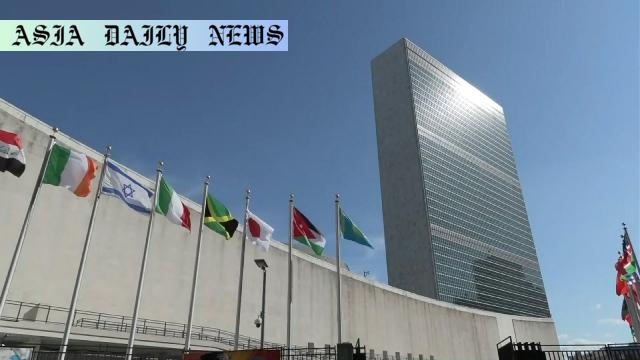Nuclear disarmament: UN to hold third meeting on nuclear weapons ban treaty amidst rising global threats.
UN nuclear weapons ban treaty meeting commences in New York.
Nihon Hidankyo sends atomic bomb survivor delegates to the event.
73 countries have ratified the treaty banning nuclear weapons.
Major nuclear-armed nations abstain, despite ongoing threats globally.

Introduction: The Global Importance of Nuclear Disarmament
Nuclear disarmament has been a critical and contentious issue in international diplomacy for decades. Against the backdrop of rising global tensions, the United Nations is hosting its third Meeting of States Parties to the Treaty on the Prohibition of Nuclear Weapons at its headquarters in New York. This week-long conference aims to foster dialogue and implementation strategies for the treaty that prohibits the development, use, and stockpiling of nuclear arms, a significant step toward global peace and security. Despite its ambitious goals, the participation of nuclear-armed nations like the United States and Russia remains absent, challenging the treaty’s effectiveness and spotlighting the global divide over disarmament.
The Role of Survivors: Nihon Hidankyo’s Contribution
The inclusion of atomic bomb survivors, or hibakusha, underscores the human dimension of nuclear conflict. Nihon Hidankyo, an organization representing survivors of the Hiroshima and Nagasaki bombings, has been an ardent advocate for nuclear disarmament. This year, they are sending two prominent members, Hamasumi Jiro and Wada Masako, to share their lived experiences and speak passionately against the horrors of nuclear weaponry. Their testimonies serve as poignant reminders of the catastrophic consequences of atomic warfare and amplify calls for action within the global community.
The Treaty’s Global Uptake and Limitations
Since its inception, the Treaty on the Prohibition of Nuclear Weapons has gained significant traction, with 94 countries signing it and 73 ratifying it. This reflects a growing global consensus against nuclear armament. However, its progress is hampered by the non-participation of nuclear-armed nations, including key players like the United States, Russia, and China. Japan, despite its tragic history with atomic bombings, has also refrained from joining, citing its security reliance on the US nuclear umbrella. This divergence between treaty supporters and non-participants presents a practical obstacle in achieving universal disarmament.
Rising Threats: The Context of Global Instability
The ongoing conflict in Ukraine, coupled with repeated nuclear threats from Russia, has heightened global concerns about the escalation of nuclear warfare. Meanwhile, China’s steady expansion of its nuclear arsenal and North Korea’s continued development of weapons and missile programs further exacerbate these fears. These developments significantly underscore the necessity for strengthened global agreements and the attainment of tangible commitments from key players.
Challenges in Achieving Disarmament
While previous US administrations, including that of Donald Trump, expressed an intent to pursue nuclear arms reduction with Russia and China, concrete steps remain elusive. The stalled state of global disarmament negotiations highlights the complex interplay of geopolitics, security concerns, and national interests. Political willpower and leadership will be required to navigate these obstacles and steer the world toward meaningful progress in reducing nuclear threats.
Conclusion: A Call for Action
The third meeting of the treaty’s states parties is a crucial moment for reaffirming the commitment to a world free of nuclear weapons. As threats multiply, the voices of survivors and non-nuclear nations should inspire tangible outcomes and encourage broader global participation. Achieving the goals of the treaty will require continued advocacy, innovative diplomacy, and the collective will of varied stakeholders to address the imminent dangers posed by nuclear weapons globally.
Commentary
The Balance Between National Security and Global Disarmament
The topic of nuclear disarmament brings into focus a fundamental dilemma: balancing national security needs with global peace aspirations. As nations like Japan prioritize security arrangements under nuclear umbrellas, they inadvertently underscore the paradox of nuclear deterrence. While these arrangements may provide immediate safety buffers, they also perpetuate global dependence on weapons of mass destruction. This highlights the challenge: ensuring security without undermining efforts for complete disarmament.
The Role of Survivors in Shifting Perspectives
The participation of hibakusha, such as those from Nihon Hidankyo, cannot be overemphasized. Their firsthand accounts of suffering reveal the human cost of nuclear warfare, transforming abstract statistics into palpable realities. Their presence at the conference serves as a powerful reminder to policymakers of the urgent need to prevent such tragedies from happening again. Personal stories often have a unique ability to influence decision-making at the international level and should be seen as a driving force for change.
Fostering Global Cooperation Amid Divisions
The absence of major nuclear-armed nations represents a significant obstacle to the treaty’s objectives. Yet, the growing list of signatories and ratified states suggests an emerging consensus among smaller countries. This duality presents both a challenge and an opportunity: global advocacy groups and diplomatic efforts must engage with non-participant nations to bridge divides and foster mutual understanding. Meanwhile, countries committed to the treaty can serve as examples, demonstrating the feasibility and benefits of a nuclear-free stance.
The Path Forward
Although substantial challenges remain, the pursuit of nuclear disarmament is more critical than ever. With global instability on the rise, the importance of treaties like this cannot be overstated. Governments, civil society organizations, and global advocacy groups must work collaboratively to convert dialogue into actionable policies. This journey may be long and arduous, but moments like the UN conference offer hope that sustained efforts can lead to a world free from nuclear threats.


